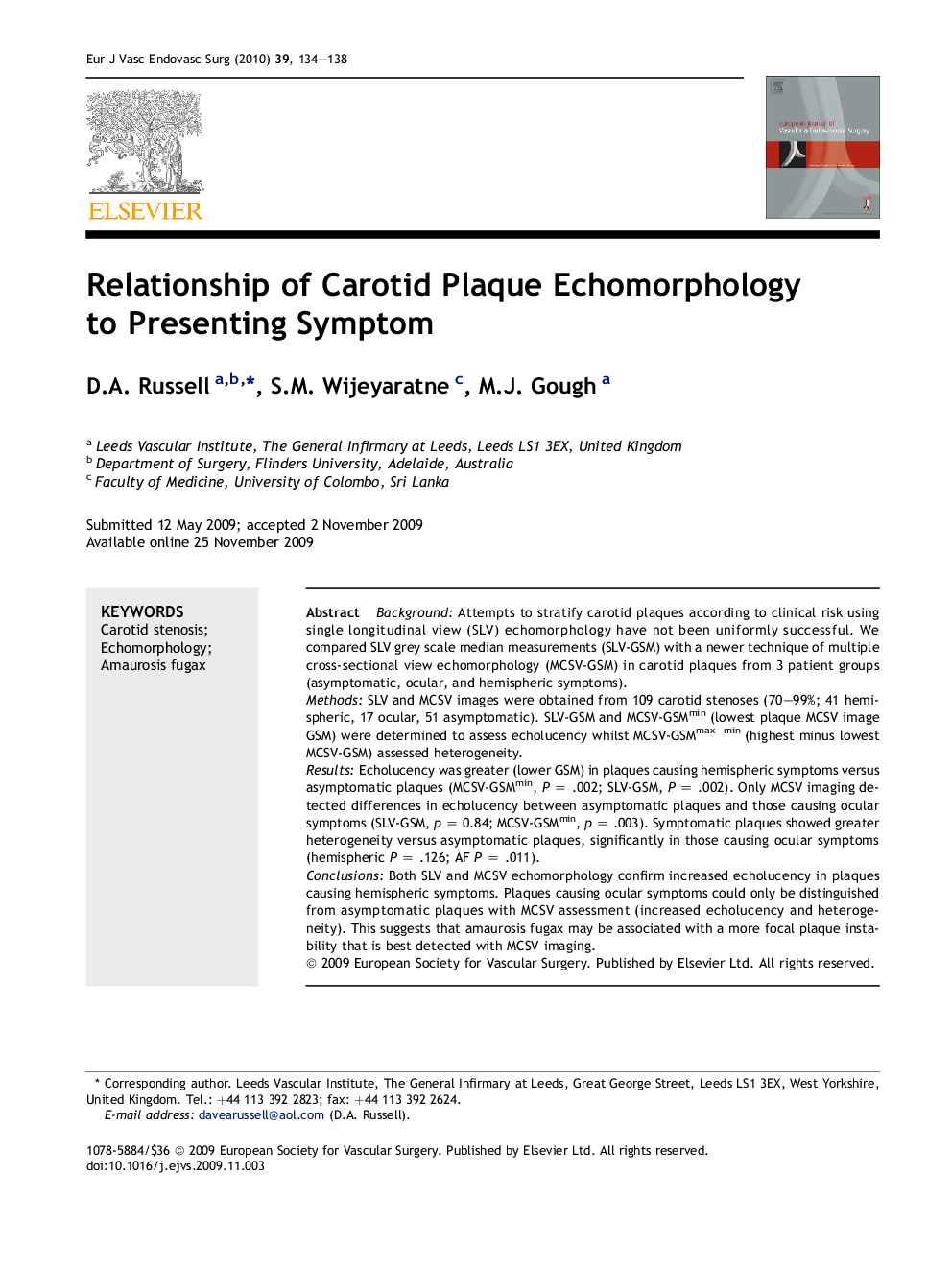| Article ID | Journal | Published Year | Pages | File Type |
|---|---|---|---|---|
| 2912889 | European Journal of Vascular and Endovascular Surgery | 2010 | 5 Pages |
BackgroundAttempts to stratify carotid plaques according to clinical risk using single longitudinal view (SLV) echomorphology have not been uniformly successful. We compared SLV grey scale median measurements (SLV-GSM) with a newer technique of multiple cross-sectional view echomorphology (MCSV-GSM) in carotid plaques from 3 patient groups (asymptomatic, ocular, and hemispheric symptoms).MethodsSLV and MCSV images were obtained from 109 carotid stenoses (70–99%; 41 hemispheric, 17 ocular, 51 asymptomatic). SLV-GSM and MCSV-GSMmin (lowest plaque MCSV image GSM) were determined to assess echolucency whilst MCSV-GSMmax−min (highest minus lowest MCSV-GSM) assessed heterogeneity.ResultsEcholucency was greater (lower GSM) in plaques causing hemispheric symptoms versus asymptomatic plaques (MCSV-GSMmin, P = .002; SLV-GSM, P = .002). Only MCSV imaging detected differences in echolucency between asymptomatic plaques and those causing ocular symptoms (SLV-GSM, p = 0.84; MCSV-GSMmin, p = .003). Symptomatic plaques showed greater heterogeneity versus asymptomatic plaques, significantly in those causing ocular symptoms (hemispheric P = .126; AF P = .011).ConclusionsBoth SLV and MCSV echomorphology confirm increased echolucency in plaques causing hemispheric symptoms. Plaques causing ocular symptoms could only be distinguished from asymptomatic plaques with MCSV assessment (increased echolucency and heterogeneity). This suggests that amaurosis fugax may be associated with a more focal plaque instability that is best detected with MCSV imaging.
